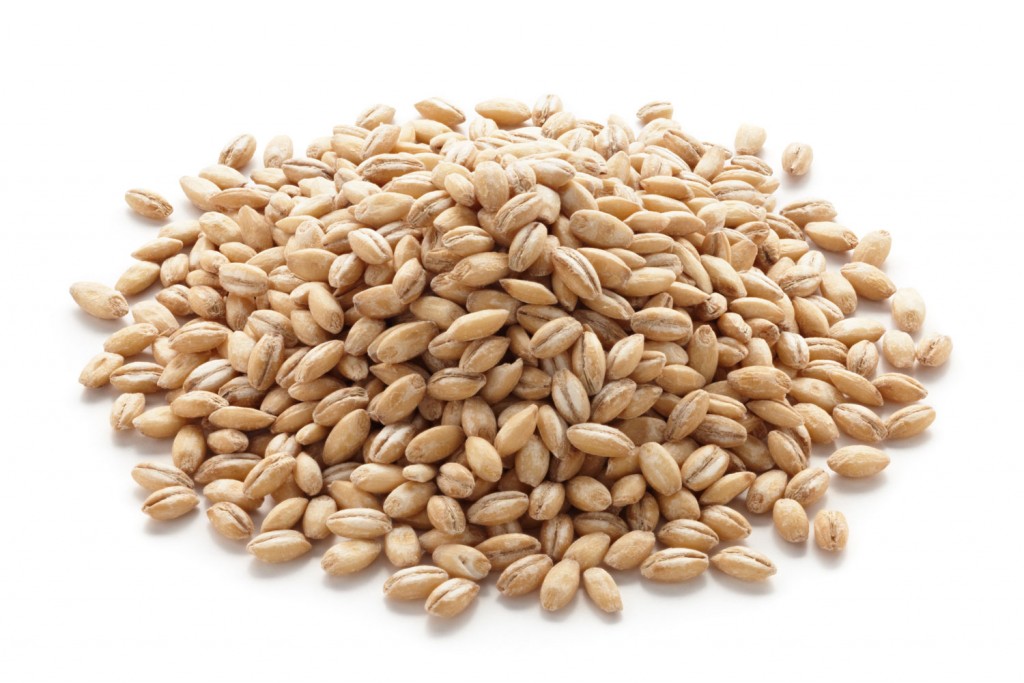BARLEY
(Hordeum distichon)
Barley is a whole grain rich in fiber, protein, Vitamin E, Vitamins B2, B6, folic acid. high- When it is cooked, barley has a chewy texture and nutty flavor, something similar to brown rice. Although making a barley is probably the most popular way of eating it, you can use it just like you would use any other grain such as couscous, quinoa or rice. Barley has a cooling effect on the body therefore it is consumed as a drink in warm temperate climates, especially Middle East and South Asia. Western world knows barley drinks in the form of malt beverages. Though this humble grain is a staple in animal feed, it’s health benefits are too numerous to be ignored for humans.
USES:
- According to the FDA, barley’s soluble fiber reduces the risk of coronary heart disease and can lower cholesterol.
- Barley contains insoluble fiber, which reduces the risk of Type 2 diabetes and colon cancer. Researches have shown that animals that were fed barley showed a lower glucose level than those fed on wheat. However, this property of barley is still being investigated.
- It is an excellent grain choice for those wanting to shed some pounds. One cup of cooked barley provides 193 calories, 6 grams of fiber and 3.5 grams of protein. With less than one gram of total fat per serving, barley is a virtually fat-free and cholesterol-free food.
- Researches have repeatedly shown that the consumption of barley in any form, be it flour, flakes or malted form, helps reduce the total cholesterol level, harmful cholesterol level, as well as triglycerides. Barley consumption has been shown effective in preventing arteriosclerosis, which leads to heart-related concerns.
- Barley in the form of flour, malt and pearl, are highly recommended in cases of:
- Indigestion (gastritis dyspepsia)
- Gastroduodenal ulcer
- Colitis
- Gastroenteritis
- Barley helps prevent certain intestinal disorders. For example, the fiber present in barley helps prevent constipation and its complications.
- Barley has a cooling effect on the body so it is a drink of choice in hot summer months in regions such as Middle East and South Asia.
HOW TO USE
- Soups
This is probably the most common (and delicious) way of consuming barley.
- Just like any other grain!
Cook it like any other grain such as rice, quinoa, or couscous. You can also substitute it for any of the other grains.
- Breads
Barley is an excellent replacement to wheat. Fine ground barley flour can be used to make breads, though the texture and taste may not be the same as wheat bread that we are so used to.
Try adding fine ground barley flour to your regular wheat flour to get some benefits of barley in your diet, without compromising the flavor and texture entirely.
- Barley Drink
A simple, delicious, cold barley drink can be a meal substitute during hot summer days.
Preparation:1 tablespoon of ground barley (fine or coarse)
½ tablespoon of cane sugar (or honey.)
1 cup of chilled water (or simply add plenty of ice)
Mix all ingredients well and enjoy. You will need to constantly rotate the flour as it will begin to settle at the bottom. Once you have gotten a hang of it, you can adjust ingredients according to your taste.
CONTRAINDICATIONS
Though there are no contraindications for the use of barley, as always, it is best to check with your health care practitioner before using it during pregnancy.
SCIENTIFIC DETAILS
Family Name: Grasses
Common Name(s): Malt;Peral Barley; Pot Barley; Scotch Barley; Jow, Jawn, Juan (Hindi/Urdu); Mai Ya (Chinese)
Part(s) Used: Polished grain without the husk
Habitat: It is cultivated worldwide
Properties: laxative, carminative, antidiabetic
Tags: laxative, carmanitive, antidiabetic

